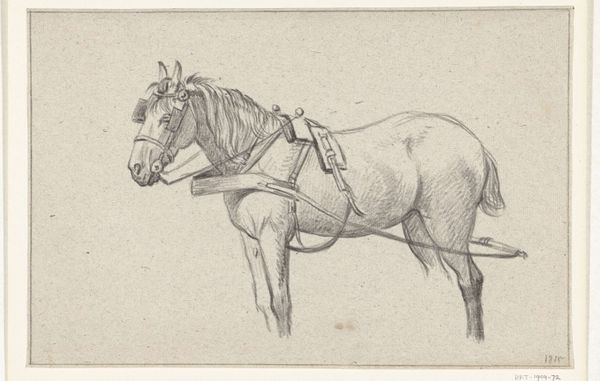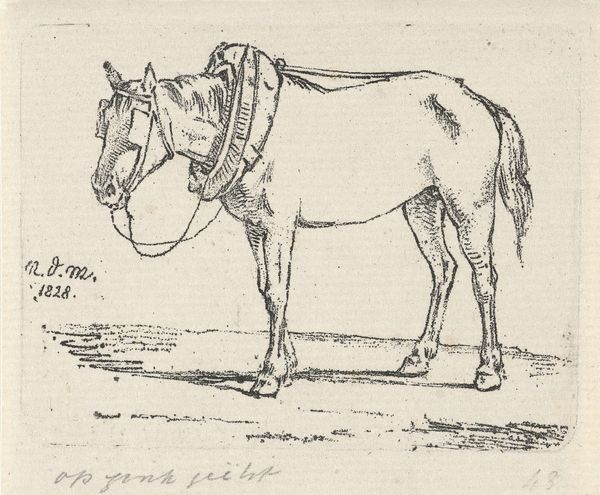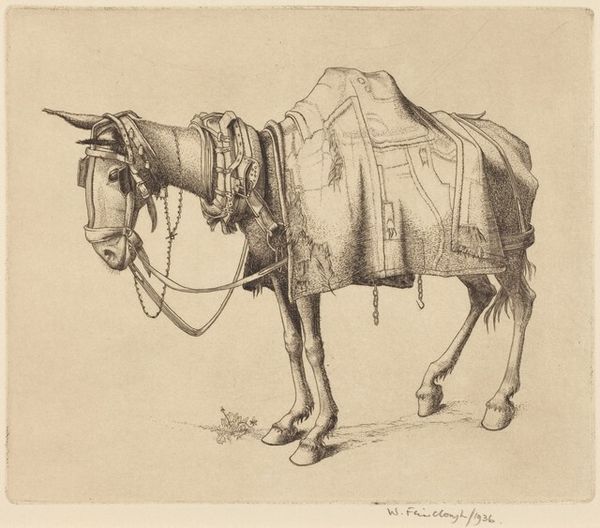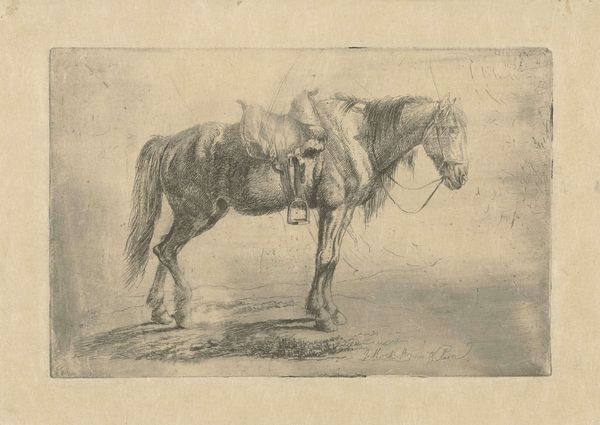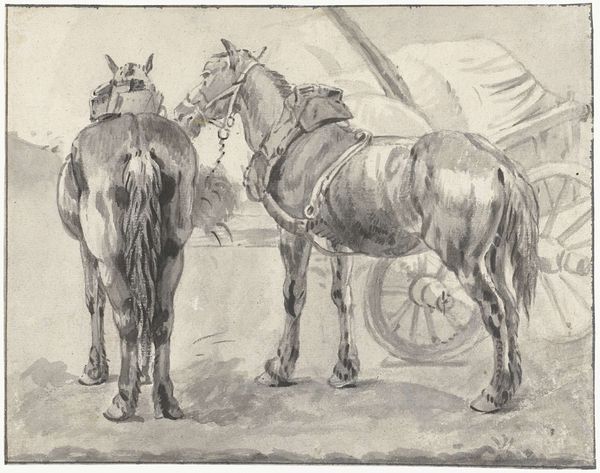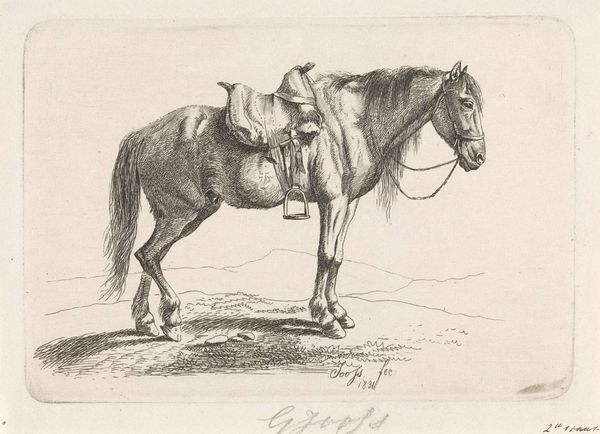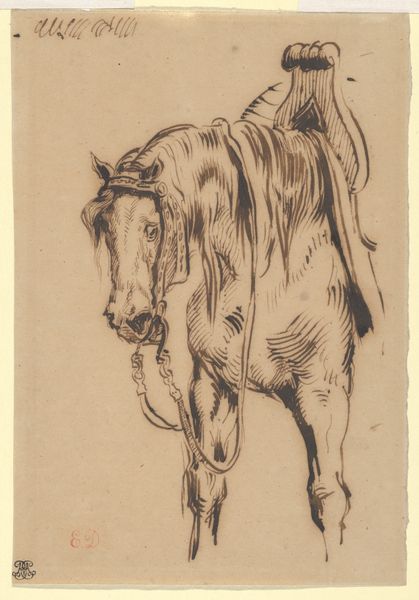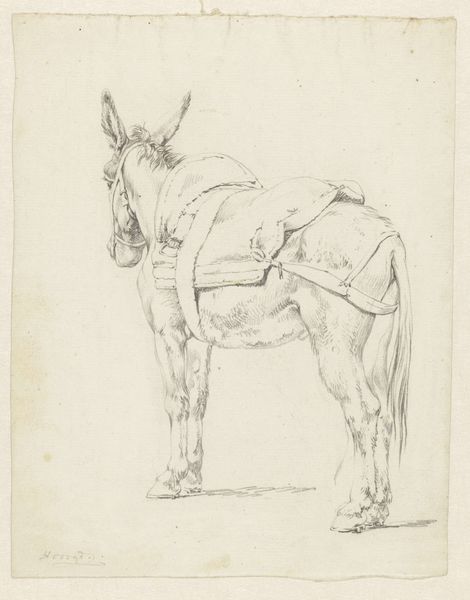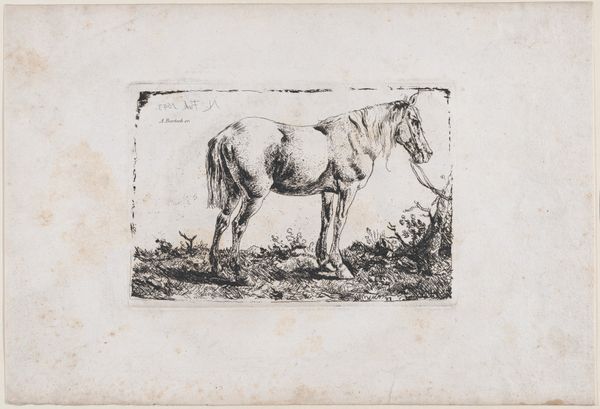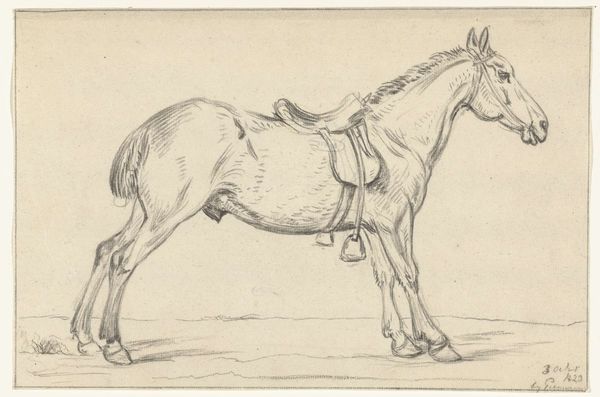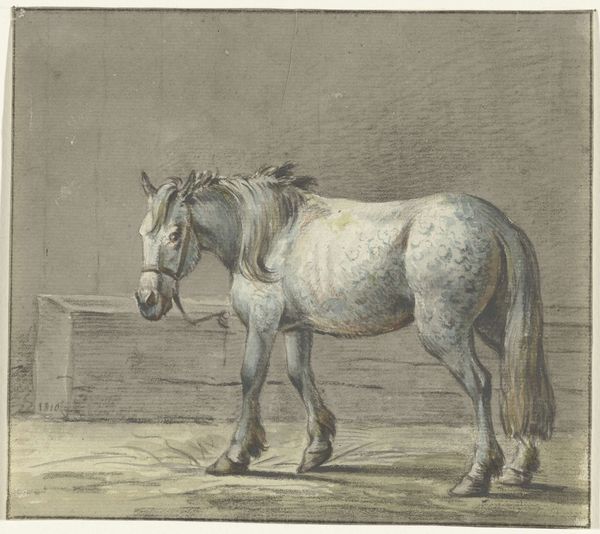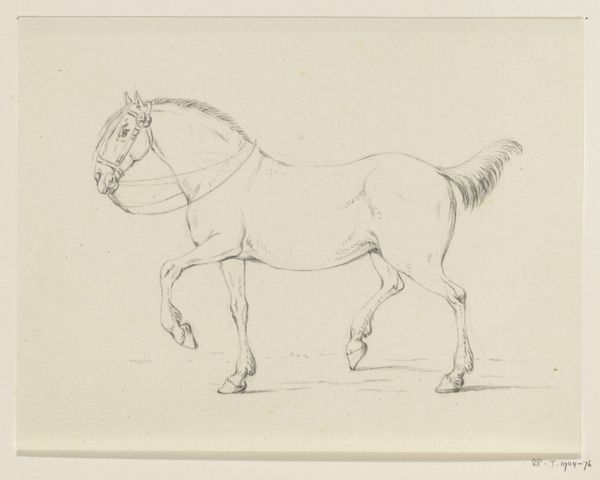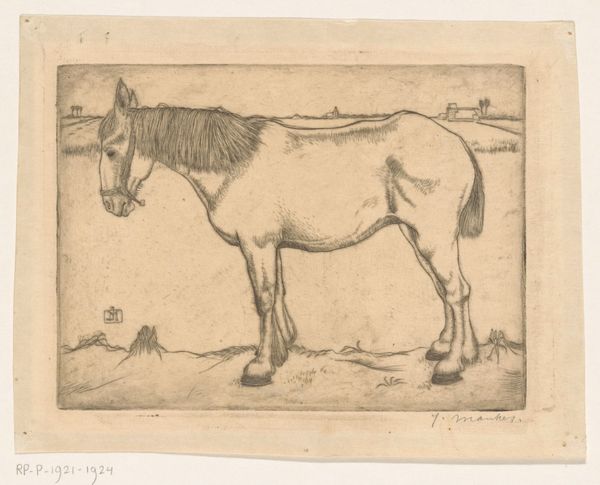
drawing, paper, ink, pencil, chalk, charcoal
#
drawing
#
landscape
#
charcoal drawing
#
paper
#
ink
#
pencil drawing
#
pencil
#
chalk
#
charcoal
#
realism
Dimensions: 267 × 197 mm
Copyright: Public Domain
Curator: This is Pieter van Bloemen's "Saddle Horse," a drawing residing here at the Art Institute of Chicago. Editor: It's rendered in what looks like charcoal and ink on paper, right? The muted tones create this atmosphere of quiet observation. Curator: Precisely. Bloemen uses a combination of charcoal, chalk, pencil and ink, yes, showcasing a keen interest in realistic depiction, especially of animals within landscape settings. Van Bloemen himself was quite entrenched in the artistic networks of his time. Editor: You can see how the artist is focused on capturing the textures - the horse's coarse hair, the worn saddle. How might the production of this image connect to broader artistic and economic trends of its time? Curator: Bloemen, rooted in Flemish painting traditions and heavily influenced by his time in Italy, addressed the demand for detailed studies, of working animals that served practical roles, reflecting evolving agricultural economies and aristocratic hobbies like equestrianism. This piece would be acquired by upper middle class art patrons as a result. Editor: Absolutely, and let's not forget the social standing embedded in these kinds of images! They reinforced the social structure through visual representations of work, skill, ownership and status. Can you talk about materiality? Curator: Considering paper, charcoal, and ink… all readily available and relatively inexpensive at the time. Drawing held its own position. It became a crucial method of preliminary study and for documenting observations and also held its place among finished works sold in galleries to members of the aristocratic class. Editor: It almost feels as though we are standing in the artist’s workshop, amidst the tools and materials themselves. Thinking about craft, this work really makes you consider labor - not just the horse's but the artist's. What can you take from that labor value and that impact within the world? Curator: Yes, looking beyond the aesthetic qualities reveals the drawing's deep connection to broader socio-economic realities of 18th-century Europe and aristocratic society in particular, providing critical context. Editor: Right, and this gives the horse itself another level of material presence, and grounds us in time. Curator: Thank you for bringing forth some important contextual background of its form. Editor: Likewise! A true conversation between art history and materials today is a win.
Comments
No comments
Be the first to comment and join the conversation on the ultimate creative platform.
